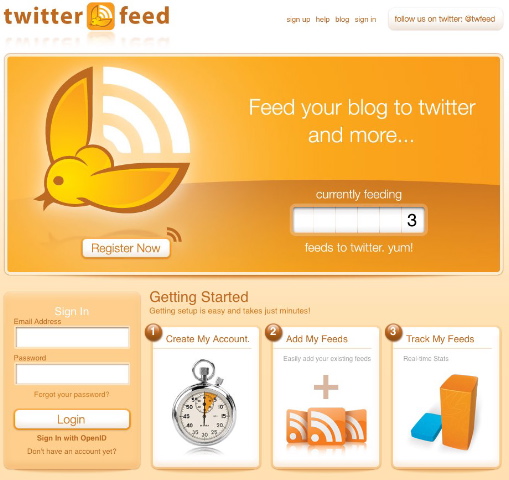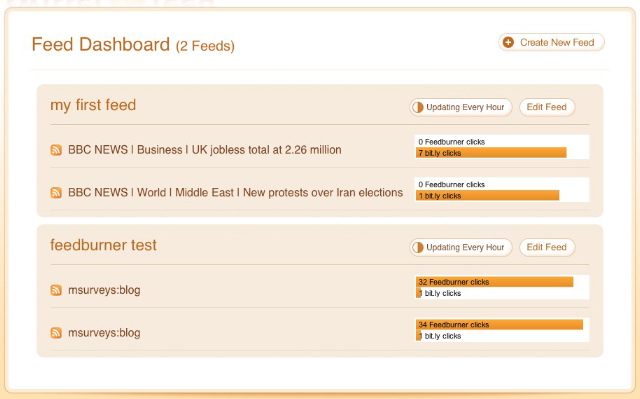
If your Twitter feed is beginning to replace your RSS feed, you can probably thank Mario Menti. Back in March, 2007, he created the initial prototype of Twitterfeed in London as part of a BBC developer program. Twitterfeed is a simple publishing tool which turns any RSS feed into a Twitter stream. Each feed item becomes a new Tweet consisting of the headline and a shortened link to the story or blog post. Today, 170,000 publishers are using Twitterfeed to convert 300,000 feeds into Twitter streams.
By one count, Twitterfeed is the third largest Twitter client, being used by 6.5 percent of all Twitter accounts and at one point was generating 9.2 percent of all Tweets.But it is not really a Twitter client, as investor John Borthwick of betaworks pointed out to me last night while we were riding in one of those bicycle rickshaws across Manhattan (I do not recommend this mode of transportation, we were in a hurry and there were no regular cabs available). Nobody uses Twitterfeed to consume their Twitter stream, so it is not really a client like TweetDeck or Seesmic Deesktop. However, a lot of people use it to populate their own Twitter account with messages.
So many people, in fact, were pushing their feeds through the service that Menti’s one-man shop was having trouble scaling the service. About a month ago, he sold a majority stake to betaworks and The Accelerator Group (TAG), and today it is relaunching with a completely rebuilt back-end, which should improve reliability.
Working with betaworks (which includes a stable of interconnected real-time startups including TweetDeck, bit.ly, and Chartbeat), the new Twitterfeed now also includes a basic analytics dashboard which brings in bit.ly data so publishers can see how much traffic is coming to their site from Twitter. They can also compare that side-by-side with traditional Feedburner stats to see where most of their redares are coming from and which source is growing faster.
Twitterfeed is also adding more sign-in options. In addition to OpenID, it now accepts usernames and passwords from Google, AOL or Yahoo accounts. But one big drawback the service still needs to address is the lag time between a post hitting a feed and the corresponding Tweet hitting Twitter. It can still take a half an hour between those two events. When you are talking real-time, that is 30 minutes too long.

